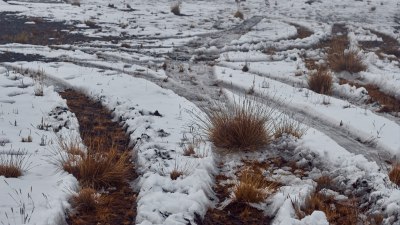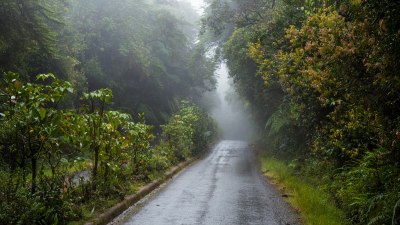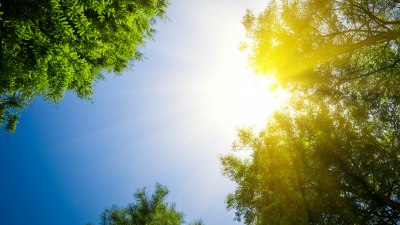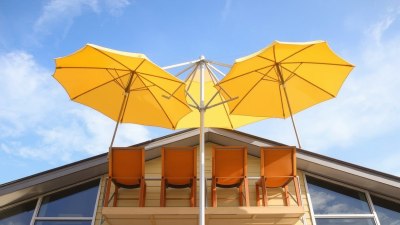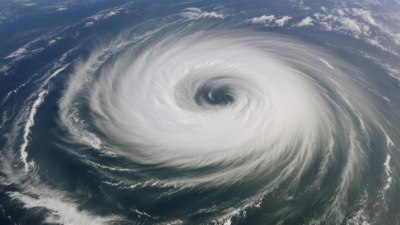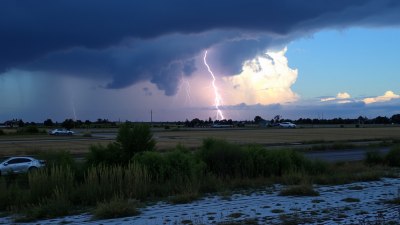Why Ice Cracks on Lakes in Winter
Explore the science behind ice cracking on lakes during winter, including temperature effects and structural changes.
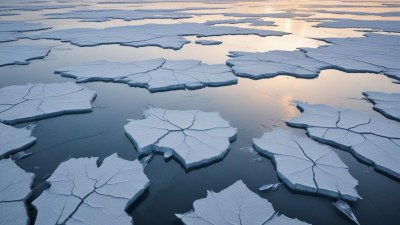
This image was created with the assistance of Freepik
Winter brings a serene beauty to lakes as they freeze over, creating a picturesque scene that often invites recreational activities such as ice fishing, skating, and snowmobiling. However, the tranquility of ice can quickly change when cracks develop. Understanding why ice cracks is essential for safety and for appreciating the dynamic processes at play. This article delves into the fascinating science of ice cracking on lakes in winter, examining the factors that contribute to this phenomenon.
The Formation of Ice on Lakes
Before we can understand why ice cracks, it is important to grasp how ice forms on lakes. As temperatures dip during winter months, water at the surface of a lake cools down and begins to freeze. The freezing process starts with the formation of a thin layer of ice, usually about an inch thick, which serves as an insulating barrier to the warmer water below. As the air temperature continues to drop, the ice thickens, sometimes reaching several feet in thickness. The rate of ice growth can vary based on several factors, including air temperature, wind conditions, and the amount of sunlight.
The Properties of Ice
Ice is less dense than water, which allows it to float. However, it is also a crystalline structure that changes properties as temperatures fluctuate. Ice is capable of expanding and contracting, which plays a significant role in why and how cracks form. When the temperature drops rapidly, ice contracts. Conversely, during warmer periods, the ice can expand. These thermal stresses create tension within the ice, leading to the development of cracks.
Temperature Fluctuations and Cracking
The most common cause of ice cracking is temperature fluctuations. Rapid changes in temperature can lead to significant pressure on the ice surface. For example, if temperatures rise during the day and drop sharply at night, the ice may crack as it transitions from a state of expansion to contraction. Additionally, sunny days can cause the surface of the ice to warm while the water below remains colder, creating internal stresses that result in cracks forming.
Mechanical Stress and Ice Thickness
The thickness of ice is another crucial factor in cracking. Generally, the thicker the ice, the more weight it can support. However, ice is not uniform in thickness, and weak spots may occur due to variations in temperature, salinity, and the presence of impurities. As more weight is placed on the ice—whether from snow accumulation, people, or vehicles—stresses increase. If the weight exceeds the ice's load-bearing capacity, cracks will develop to accommodate this stress.
Environmental Factors Influencing Ice Cracking
Several environmental factors influence the formation of cracks in lake ice. Wind is a significant contributor, as it can create waves beneath the frozen surface, causing stress points that lead to cracking. Additionally, the presence of snow on top of the ice can add weight and affect the thermal properties of the ice, further complicating issues of expansion and contraction. Debris beneath the ice can also create irregularities that weaken structural integrity, contributing to crack formation.
The Types of Ice Cracks
Ice cracks can manifest in several different forms, each indicating a specific type of stress and environmental condition. One of the most common types is a transverse crack, which appears perpendicular to the direction of the stress. Longitudinal cracks, on the other hand, run parallel to the direction of applied pressure. These crack patterns can be influenced by wind direction, temperature changes, and the weight of objects on the ice. In some cases, cracking can lead to the formation of large ice slabs that can shift and move, further complicating safety conditions on the lake.
Sound of Ice Cracking
One of the most intriguing aspects of cracking ice is the sound it produces. When ice fractures, it can create a sharp, loud sound that echoes across the surface of the snow-covered lake. This sound occurs due to the rapid expansion of crack surfaces as they move apart, creating vibrations in the air. Many people describe the sound as similar to a gunshot or a thunderclap. For some, this sound serves as a warning to take caution, while for others, it adds to the allure of ice-covered lakes during the winter months.
Safety Precautions on Frozen Lakes
Understanding the mechanisms behind ice cracking is essential for ensuring safety when engaging in winter activities on lakes. It is imperative to check the ice thickness before venturing out, as thin ice is prone to breaking. Recommendations suggest a minimum thickness of at least four inches for foot traffic, eight to twelve inches for snowmobiles, and twelve to fifteen inches for larger vehicles. Always avoid areas with visible cracks, depressions, or areas where there may be standing water, as these can indicate weak spots in the ice.
Rescue Tips for Cracked Ice Emergencies
If an individual does happen to fall through the ice, immediate action is essential. It is crucial to stay calm and try to get back onto the ice by performing a 'swimming motion' while keeping the upper body as flat as possible. This reduces the weight on any weak ice around the edges of the hole. If you cannot get out on your own, yell for help and attempt to reach for something that can assist, such as a branch or a ski pole. Also, spreading your weight out as much as possible may help you remain on the surface as you await assistance.
The phenomenon of ice cracking on lakes during winter is a complex interplay of temperature changes, mechanical stresses, and environmental factors. By understanding the science behind ice formation and cracking, winter enthusiasts can enjoy these frozen landscapes while prioritizing their safety. Knowledge about ice conditions can make a significant difference in risk management during winter activities, ensuring that the beauty of lakes in winter is experienced not just for their aesthetic value but also for their safety and enjoyment.


